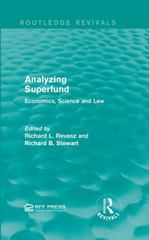4- Let U(X,Y) = JXY. Let I = $100, Px = $10 and P, = $10 be the initial set ofprices and income. Now, let P,' rise to $25. What are the substitution and income effects of this change in prices? A) Income effect = -3.3; Substitution Effect = -2.1 B) Income effect = 4.3; Substitution Effect = - l .7 C) Income effect = -l.3: Substitution Effect = - l .7 D) E) None of the above Income e'ect - -l.'l; Substitution Effect - - l .3 on (15 marks) A consumer buys two goods, good X and acomposite good Y. The utility function is given as U(X. Y) = in3Xl'. The price ofX is Px. the price 01"! is Py and Income is l. l) Derive the demand equation for good X. ( 5 marks) 2) Are the two goods X and Y complements or substitutes? Why? ( 5 marks) 3) Suppose that I=$Itl and suppose that initially the P; = $1 and subsequently PX falls and becomes 50.5 per unit. Calculate numerically the value the price effect as a result of the drop in P, and graph the results. (5 marks) was.) Suppose all firms in the market are identical. Each firm has a long run total cost curve LTC = 300 Q2 + 0.0103. The market demand curve is Q = 25,000 1000P. Find the long run equilibrium quantity per rm, price, and number of rms in the market. Qtlo marks) Suppose the market consist of 500 identical rms, and the market demand is given by Q = 50 P . Each rm has a short run total cost curve STC = 0.3 + ZSOQZ. I) What is the short run equilibrium price inthis market? (5 marks) 2) What is the prot maximizing quantity for each rm? (5 marks) Qttl (4.0 marks) Suppose the nn's production function is given as Q = 10!\". , where L is labor, K is capital. 1) Calculate the elasticity of substitution of this production function. (Smarts ) 2) What is the equation of the isoquant corresponding to this production function? (Smarks) 3) What type of return to scale does this production exhibit? And Why? ( marks ) 4) Derive the long run total cost function. (5 marks) 5) What is the long run average and marginal cost functions? (5 marks) 6) Suppose that capital is xed at a level I? . What is the short run total cost function for this production function. (5 marks) 7) What is the short run average variable cost and short run average xed cost mctions? (5 marks) 8) Suppose that the price of labor w=85 and the price of capital r =3\". What is the cost- minimizing input combination if the rm wants to produce 50 units? ( 5 marks) Question #5 t It) marks) Assume the market demand is P = 190 0.010. Suppose we have a monopolist with two plants. Plant l's total cost is given as T61 = 150,000 + 4001 + 0.0] Q} Plant 2'stotal cost is given as TCz = 125.000 + 2002 + 0.02 O; I) What is the total output that maximizes the monopolist prot." What price should it charge? And how much protlloss does it achieve? (5 units) 2) How much should the monopolist produce in each plant? (5 marks) Question #6130 marks) Assume we have a monopolist in the market who faces a market demand P = 20 20. His marginal cost is $2, and has a fixed cost of$30. 1) Suppose the monopolist's objective is to maximize prot. What quantity should it produce and what price should it charge? (5 marks) 2) How much is the learner's index of monopoly power? (5 marks) 3) Calculate the price elasticity of demand at the monopolist prot maximizing quantity. (5 marks) 4) Suppose instead of having monopoly the market was perfectly competitive. What quantity should a {mu produce and what price should it charge? (5 marks) 5) How much is the deadweight toss that result from the monopoly? (5 marks) 6) Now suppose the monopolist's objective is to maximize total revenue. What quantity and price achieve this objective







